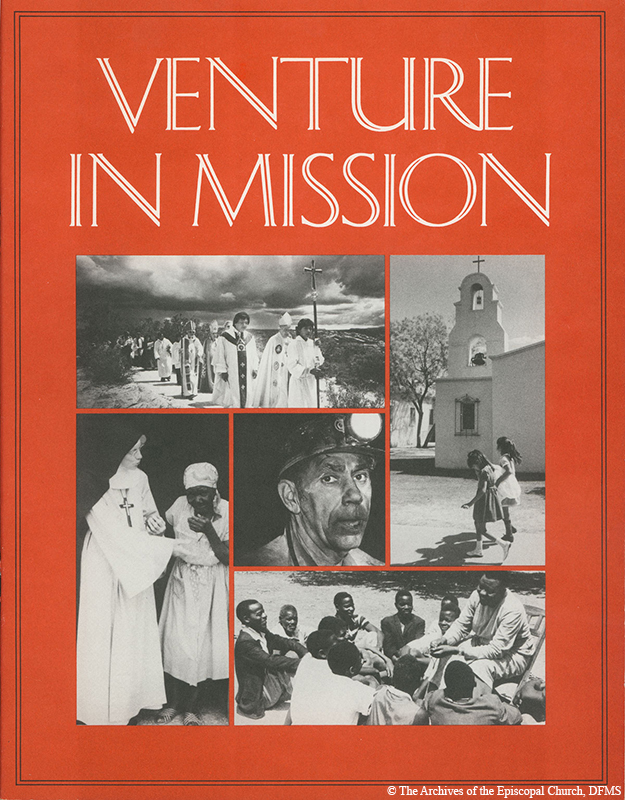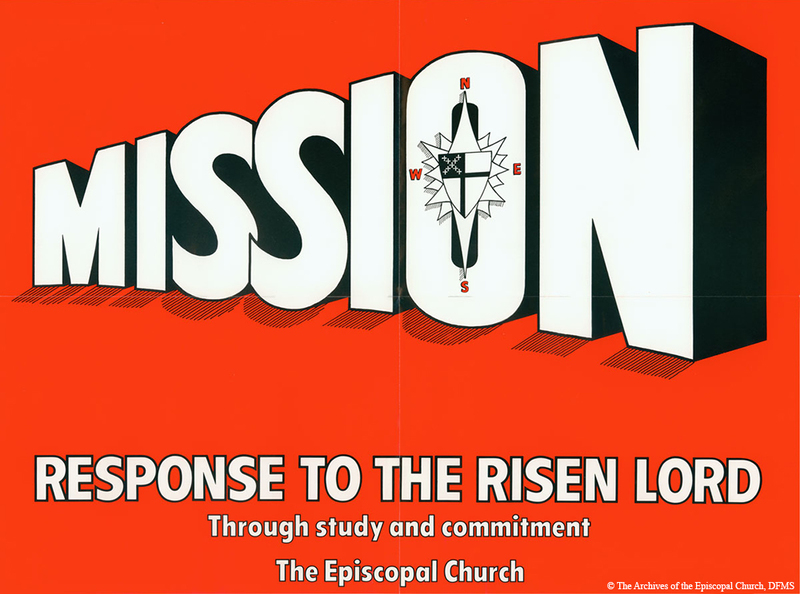To Go Where We Are Sent

VIM brochure cover, 1978. Read more about the mission program in the 1978 VIM Q&A pamphlet here.

“Response to the Risen Lord: Through study and commitment”. Part of the VIM program was a “Year of Study of Christian Mission” in order to identify the mission opportunities throughout the church and how members would be able to contribute and participate. Read more about the 1978 Year of Study here.
“Our vocation is to come and stand with Jesus Christ; recognize the needs and opportunities for Christian mission; go where we are sent; serve with the people of the Church wherever we find ourselves and share the life Christ graciously gives.” 65
Bishop Allin’s leadership was buffeted by Church controversies, especially women’s ordination and liturgical reform. This testing led him to search for a meaningful way to construct a common purpose for his administration. His unflagging faith in God, a pragmatic spirit, and a hope in the power of human relationships sustained him in an essential optimism. John Allin was committed to nothing if not the Episcopal Church’s future. That commitment to strong foundations led Allin to push for the one effort that would make a difference in the capacity of the Episcopal Church to serve others: Venture In Mission (VIM).
More an institutional leader than a politically savvy figure, Bishop Allin focused his energies full throttle on the one area that was of the utmost importance to him, the Church’s mission. He considered mission to be a thorough involvement in everything from evangelism to education to human suffering, and in all these realms he recognized local participation as the true business of the national Church. Rather than funding mission from the flat-growth endowment and precarious giving of the annual diocesan apportionments, Allin boldly challenged a recalcitrant Executive Council to envision a coordinated, Church-wide strategy to raise new sources of income and raise the threshold of the Episcopal Church’s reach into the community and its institutional capacity to meet spiritual and human needs. This strategy was VIM, a program meant to renew the interest in, enthusiasm for, and dedication to mission among all Episcopalians.
Approved by the 65th General Convention in 1976, Venture in Mission was a response to the 1973 General Convention’s charge to Executive Council, “to arrange visits and consultations with representatives of parishes, dioceses, the national Church, and others, for the purpose of developing a strategy to release the human and financial resources of the Church.” In keeping with this mandate from General Convention, the conception and development of VIM involved consulting with individual dioceses about how they could participate and in setting the direction for how VIM’s case could be used to support local mission.

